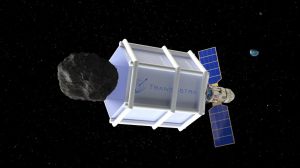Gujarat finds way to bypass Greens
Figuratively, it was a bypass to the hurdles created by environmentalists. Literally, it’s a bypass that allows Gujarat to draw Narmada...

Figuratively, it was a bypass to the hurdles created by environmentalists. Literally, it’s a bypass that allows Gujarat to draw Narmada waters much before the dam reaches its full height.
Two years after the Narmada Control Authority (NCA) allowed Sardar Sarovar Narmada Nigam Ltd (SSNNL) to construct two irrigation bypass tunnels (IBPTs), Gujarat is reaping a harvest of the Narmada waters even before the first IBPT is yet to be completed.
Narmada waters started flowing into the Narmada Main Canal (NMC) through the IBPT on Tuesday when the river, following heavy rain in its catchment area in MP, overflowed the dam.
At present, the canal has three metre deep water over a length of 144 km. Water can flow into the IBPT even when the reservoir level is 89.33 m. The reservoir level was in excess of 99 m on Tuesday, which rose to nearly 103 m on Thursday.
The IBPT is Gujarat’s answer to the objections raised by the anti-dam lobby, which said increase in the dam’s height would mean more people would be displaced. Without IBPT, the water would have reached the NMC only at the dam height of 110 m. At present, the dam stands at 98 m, including a three-metre hump.
If used only for drinking purposes, the water stored in the NMC can solve 50 per cent of state’s drinking water needs, Sardar Sarovar Narmada Nigam officials said.
The state government says as much as one lakh hectares of land can be irrigated and drinking water provided to 9,000 villages. More rains will enable the state government to decide whether to divert the extra water for other purposes.
Water is flowing into the NMC at the rate of 9,000 cusecs. Even if inflow in the reservoir goes down to 6,000 cusecs, water can be released.
To give an idea of how much water is stored in the NMC, an official said 6,000 cusecs means 60 times Vadodara’s requirement of water flowing into the canal daily.
Another round of flood in the Narmada will allow authorities to store water up to 263 km in the main canal.
On Friday, the government could release water into the Sabarmati and Wadhawana ponds near Dabhoi.
The decision to divert the water into the Sabarmati or the Mahi to meet the requirements of cities like Ahmedabad or Vadodara is yet to be taken.


- 01
- 02
- 03
- 04
- 05





























